Scoliosis rehabilitation exercises focus on improving spinal alignment and posture through targeted movements. These exercises help prevent progression, reduce bracing needs, and enhance mobility and strength. Personalized plans, often home-based or therapist-guided, are essential for effective treatment.
Overview of Scoliosis and Its Impact
Scoliosis is a medical condition characterized by an abnormal sideways curvature of the spine. It affects millions globally, with adolescent idiopathic scoliosis (AIS) being the most common form. If left untreated, scoliosis can lead to chronic pain, respiratory issues, and reduced mobility. It also impacts mental health, causing self-esteem concerns due to visible postural changes. Early intervention is crucial to prevent progression, especially in growing children. Rehabilitation exercises play a vital role in managing scoliosis, improving posture, and enhancing overall quality of life for patients.
Importance of Rehabilitation Exercises
Importance of Rehabilitation Exercises
Rehabilitation exercises are crucial for managing scoliosis, as they help prevent curvature progression, reduce the need for bracing, and improve posture, strength, and mobility. These exercises can alleviate pain, enhance respiratory function, and promote long-term spinal stability. They are particularly beneficial for adolescents with idiopathic scoliosis, as they can prevent bracing or surgery. Consistent exercise routines also improve overall physical function and quality of life, making them a cornerstone of scoliosis treatment alongside medical interventions.
Role of Exercise in Scoliosis Management
Exercise plays a pivotal role in scoliosis management by addressing spinal curvature, improving posture, and enhancing overall physical function. It serves as a non-surgical intervention to prevent progression, particularly in mild cases. Exercises can be used alone or alongside bracing to promote spinal stability and reduce the need for more invasive treatments. Regular physical activity strengthens core muscles, improves flexibility, and enhances respiratory function, making it a cornerstone in managing both adolescent and adult scoliosis effectively.
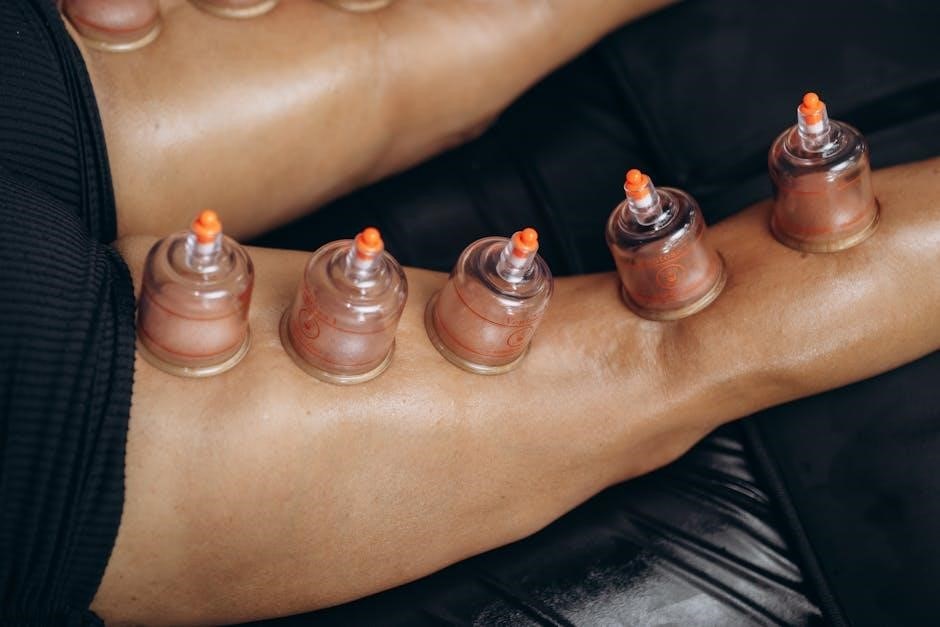
Types of Scoliosis Rehabilitation Exercises
Scoliosis rehabilitation exercises include core strengthening, flexibility, breathing techniques, Schroth method, SEAS, and RAB. These exercises aim to improve posture, spinal stability, and overall physical function effectively.
Core Strengthening Exercises
Core strengthening exercises are essential for scoliosis rehabilitation, targeting abdominal and back muscles to improve spinal stability. Planks, bird-dog, and pelvic tilts are common exercises. These movements enhance posture, reduce curvature progression, and promote balanced muscle development. Proper technique is crucial to avoid exacerbating the condition. Supervision by a physical therapist ensures safety and effectiveness, tailoring exercises to individual needs. Strengthening the core helps stabilize the spine, improving overall alignment and reducing discomfort. Consistency in these exercises is key for long-term benefits and spinal health.
Flexibility and Stretching Exercises
Flexibility and stretching exercises play a vital role in scoliosis rehabilitation by improving spinal mobility and reducing muscle tension. Gentle stretches, such as cat-cow and child’s pose, target tight muscles around the spine. These exercises help restore range of motion and alleviate discomfort. Stretching should be done carefully to avoid overextension. Regular practice enhances posture and complements strengthening routines, promoting a balanced approach to spinal health. Consistency in stretching routines is essential for maintaining flexibility and supporting long-term spinal alignment.
Breathing Techniques for Scoliosis
Breathing techniques are integral to scoliosis rehabilitation, aiding in spinal derotation and relaxation. Methods like Rotational Angular Breathing (RAB) help expand collapsed areas during inhalation and stabilize corrections during exhalation. Proper breathing enhances posture, reduces muscle tension, and improves overall spinal alignment. These techniques are often combined with exercises to maximize their benefits and promote a more balanced spinal structure. Regular practice of breathing exercises supports long-term spinal health and complements other rehabilitation strategies for individuals with scoliosis.
Pelvic Tilt and Spine Extension Exercises
Pelvic tilt and spine extension exercises help improve posture and spinal flexibility. These exercises involve gentle movements, such as tilting the pelvis backward while lying on the back with knees bent. They strengthen core muscles and enhance spinal alignment. Regular practice can reduce curvature severity and alleviate discomfort. These exercises are often performed both in and out of a brace, making them versatile for scoliosis management. They play a key role in maintaining spinal health and are frequently recommended in rehabilitation programs.
Weight-Bearing Exercises
Weight-bearing exercises strengthen bones and muscles, enhancing spinal stability. Activities like walking, swimming, and standing poses improve posture and reduce curvature progression. These exercises promote bone density, crucial for spinal health, and are often combined with core-strengthening routines. They are adaptable to different fitness levels and play a vital role in scoliosis management. Regular practice helps maintain optimal spinal alignment and overall physical well-being.

Physiotherapeutic Scoliosis-Specific Exercises (PSSE)
PSSE are tailored exercises addressing scoliosis curvature type and severity, focusing on posture correction, spinal stability, and muscle balance to improve function and reduce discomfort.
Principles of PSSE
PSSE principles include patient-specific exercises tailored to curve type and severity. They emphasize posture correction, improving spinal stability, and enhancing muscle balance to restore normal movement patterns. These exercises often combine breathing techniques, core strengthening, and spinal alignment strategies to address the 3D nature of scoliosis. The approach focuses on active participation, promoting awareness and control over spinal positioning. Regular practice is crucial for long-term benefits, including curve stabilization and improved quality of life.
Benefits of PSSE for Adolescent Idiopathic Scoliosis
PSSE offers significant benefits for adolescents with idiopathic scoliosis, including halting curve progression and reducing the need for bracing. These exercises improve spinal stability, posture, and overall quality of life. By strengthening specific muscles and enhancing awareness, PSSE can help restore a more balanced spinal alignment. Regular practice may also reduce the risk of surgery and improve long-term functional outcomes. The approach is non-invasive and tailored to individual needs, making it a valuable first-line treatment for managing mild to moderate scoliosis effectively.
Comparison of PSSE with Other Treatments
PSSE stands out as a non-invasive alternative to bracing and surgery, offering a proactive approach to managing scoliosis. Unlike bracing, PSSE promotes active muscle engagement without restricting movement. It is often more effective than general exercises in addressing spinal asymmetry. While bracing may halt progression in moderate cases, PSSE can achieve similar results with added benefits of improved posture and strength. Surgery remains a last resort, making PSSE a preferred option for mild to moderate curves, emphasizing long-term spinal stability and patient empowerment through tailored exercise routines.
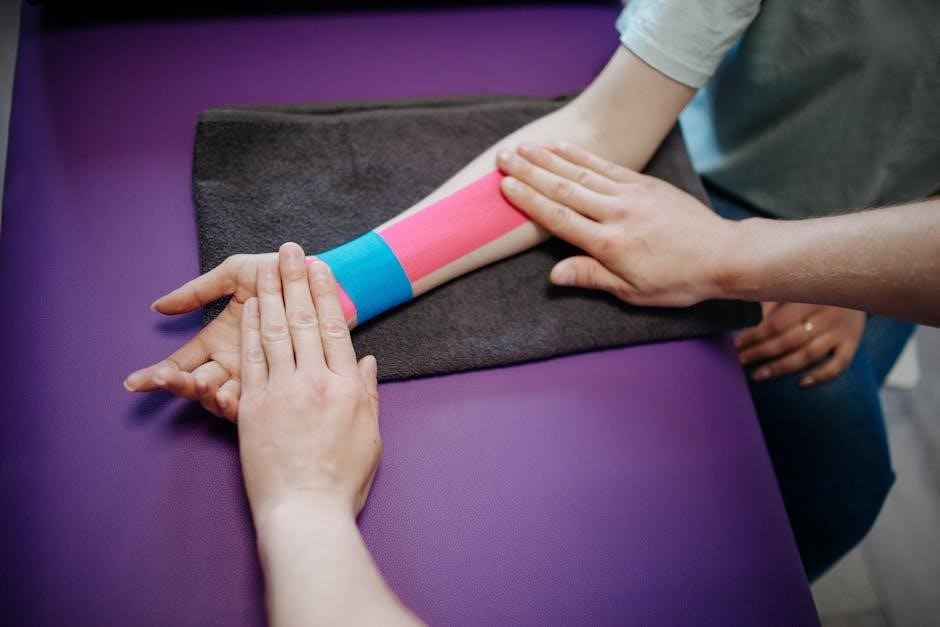
Schroth Method for Scoliosis Rehabilitation
The Schroth Method combines specific exercises, breathing techniques, and manual therapy to address spinal curvature, improve posture, and enhance quality of life for scoliosis patients.
Overview of the Schroth Method
The Schroth Method is a non-invasive, scoliosis-specific approach combining tailored exercises, breathing techniques, and manual therapy to address spinal curvature. It focuses on posture correction, rotation reduction, and spinal stabilization, aiming to improve aesthetics and quality of life. Designed for both adolescents and adults, the method emphasizes individualized exercises to halt progression and enhance mobility, making it a cornerstone in conservative scoliosis management.
Application of Schroth Exercises for Adults
Schroth exercises for adults focus on improving posture, reducing pain, and enhancing spinal stability. Tailored to address adult-specific needs, these exercises incorporate breathing techniques and manual adjustments to target curvature and promote symmetry. Unlike adolescent treatments, adult programs prioritize comfort and functionality, aiming to improve quality of life and prevent progression without bracing or surgery, making them a viable option for long-term management. Regular practice helps adults maintain spinal health and overall well-being effectively.
Combination of Schroth with Manual Techniques
The Schroth method is often enhanced by incorporating manual techniques, such as soft tissue mobilization and joint mobilizations, to improve spinal flexibility and alignment. These hands-on methods complement Schroth exercises by addressing muscle imbalances and enhancing posture correction. Manual techniques can deepen the effects of Schroth exercises, promoting better spinal stability and reducing discomfort. This integrated approach is particularly beneficial for adults with scoliosis, as it combines active exercises with passive therapies to optimize treatment outcomes and improve quality of life.
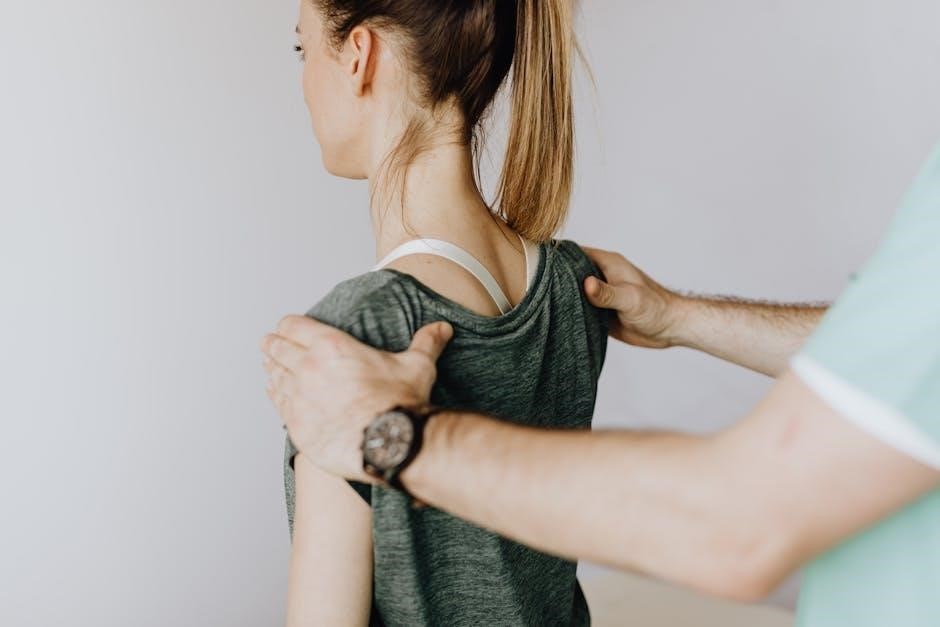
Scientific Exercise Approach to Scoliosis (SEAS Method)
The SEAS method focuses on improving spinal stability, reducing pain, and enhancing function. Tailored exercises address specific curvature needs, offering personalized correction and relief for scoliosis patients.
Key Components of the SEAS Method
The SEAS method emphasizes spinal stability, pain reduction, and functional improvement. It incorporates specific exercises tailored to individual curvature needs, focusing on core strengthening and posture correction. Patient education plays a crucial role, empowering individuals to manage their condition effectively. The approach combines targeted movements with breathing techniques to enhance spinal alignment and reduce discomfort. Regular practice and progressive adjustments ensure long-term benefits, making SEAS a comprehensive and adaptive rehabilitation strategy for scoliosis patients.
Effectiveness in Improving Spinal Stability
Research shows that the SEAS method significantly enhances spinal stability in scoliosis patients. By targeting core muscles and improving posture, it reduces spinal curvature progression. Studies indicate that consistent practice leads to better alignment, reducing the need for bracing or surgery. Patients often experience improved mobility and reduced pain, contributing to overall spinal health and stability. The method’s focus on individualized exercises ensures tailored benefits, making it an effective option for managing scoliosis and improving long-term spinal function.
Patient Outcomes and Symptom Relief
The SEAS method demonstrates significant improvements in patient outcomes, particularly in reducing pain and enhancing quality of life. Many patients experience a noticeable reduction in spinal curvature and improved posture. Studies highlight that consistent practice of SEAS exercises leads to long-term symptom relief, including decreased back pain and improved respiratory function. The method’s focus on spinal stability and alignment contributes to better overall physical comfort, making it a valuable option for managing scoliosis symptoms effectively.
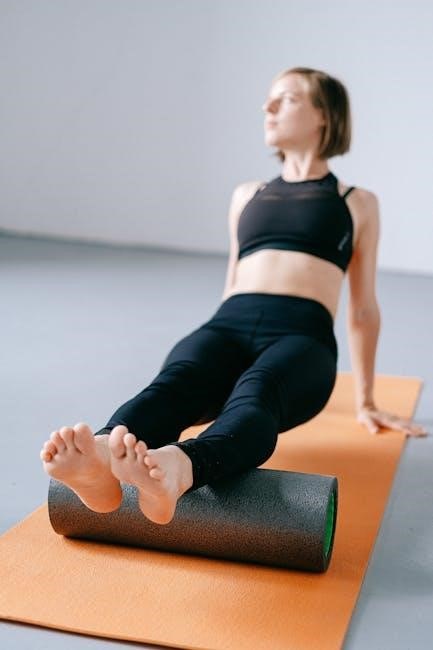
Rotational Angular Breathing (RAB) Technique
The RAB technique uses breathing to create forces that derotate the spine and rib cage, improving posture and reducing curvature through targeted inhalation and exhalation patterns.
Concept of RAB in Scoliosis Rehabilitation
The Rotational Angular Breathing (RAB) technique focuses on using controlled breathing patterns to create corrective forces for spinal derotation and alignment. By expanding collapsed areas during inhalation and stabilizing corrections during exhalation, RAB aims to improve posture and reduce curvature. This method targets the rib cage and spine, promoting symmetry and balance. It is often integrated with other exercises to enhance the effectiveness of scoliosis rehabilitation programs, offering a non-invasive approach to managing spinal deformities and improving patient outcomes.
Practical Application of RAB
RAB is performed by patients in specific postures tailored to their spinal curvature. During inhalation, the patient focuses on expanding the concave side of the rib cage, while exhalation involves stabilizing this expansion. This technique is typically guided by a therapist and can be integrated into daily routines. Regular practice enhances spinal flexibility and promotes long-term postural correction, making it a valuable component of scoliosis rehabilitation programs aimed at improving both function and aesthetics.
Benefits of RAB for Spinal Derotation
RAB effectively addresses spinal derotation by enhancing rib cage and vertebral alignment. It reduces curvature severity, improves breathing patterns, and stabilizes the spine. This technique also strengthens core muscles and enhances posture, offering long-term benefits for scoliosis patients.
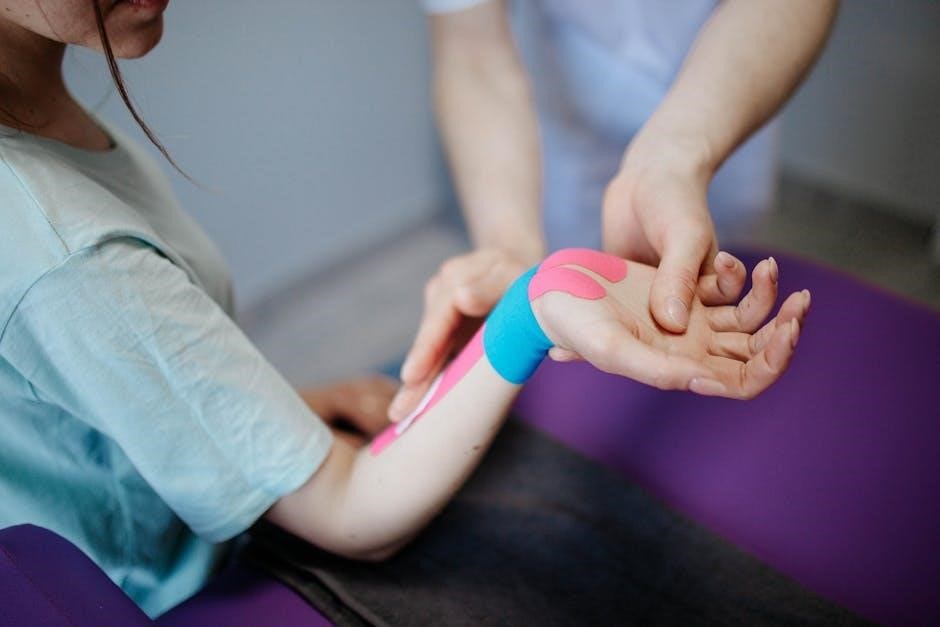
Exercises for Patients Wearing a Milwaukee Brace
Exercises for Milwaukee Brace users include pelvic tilts and spine extensions, targeting the back, core, and pelvis. Performed both in and out of the brace, they enhance spinal stability and reduce progression risk.
Specific Exercises for Milwaukee Brace Users
Exercises for Milwaukee Brace users include pelvic tilts, spine extensions, and deep breathing. These target the back, core, and pelvis, improving spinal stability. Examples are pelvic tilts, done while lying on the back with knees bent, and spine extensions, which strengthen the upper back muscles. Patients perform these exercises both in and out of the brace, with specific repetitions and durations. Proper technique is crucial to avoid discomfort and ensure effectiveness. Consistency helps reduce curvature progression and enhances overall spinal alignment and strength.
Frequency and Duration of Exercises
Exercises for Milwaukee Brace users typically involve a structured routine. Exercises 1 through 5 are held for five seconds and repeated ten times daily. Exercises 7 and 8 are performed multiple times a day to maintain spinal alignment. Consistency is key, with daily practice recommended to support brace effectiveness. The routine may vary based on individual needs and brace wear duration, ensuring optimal spinal stability and muscle engagement. Regular practice helps prevent progression and enhances treatment outcomes.
Targets for Brace-Related Exercises
Exercises for Milwaukee Brace users primarily target the back, core, and pelvis. These exercises aim to strengthen muscles, improve spinal stability, and maintain proper alignment. Specific movements like pelvic tilts and spine extensions help reduce curvature progression. Deep breathing techniques enhance rib cage expansion and spinal derotation. Stretching exercises improve flexibility and prevent muscle tightness. The goal is to complement the brace’s corrective role, promoting long-term spinal health and postural alignment while minimizing the risk of further deformity and enhancing overall mobility and function. Consistency in these exercises is crucial for optimal results.
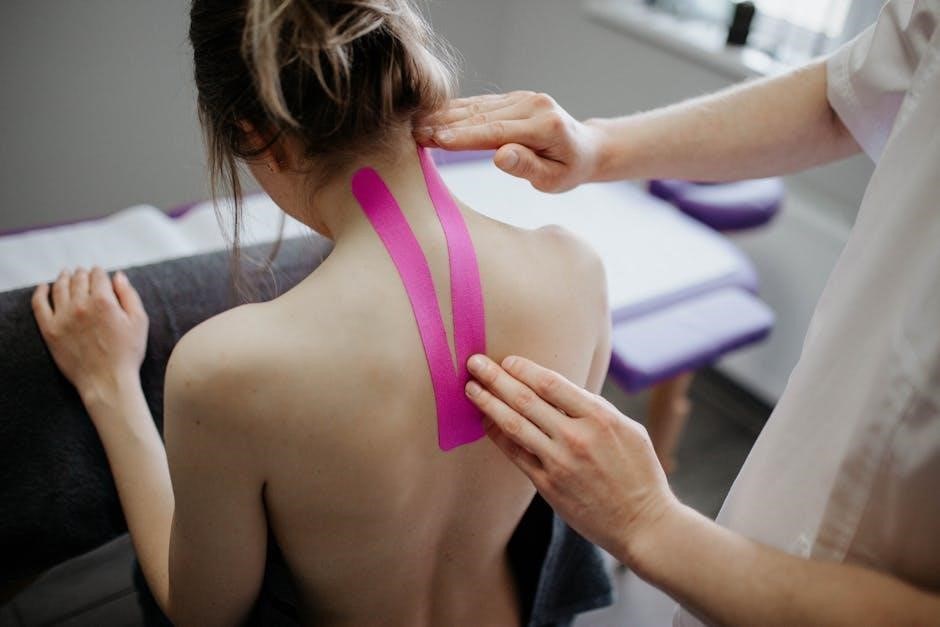
Home Exercise Programs for Scoliosis
Home exercise programs for scoliosis involve personalized routines targeting core strength, flexibility, and posture. These exercises, often guided by therapists, aim to improve spinal alignment and overall mobility.
Creating a Personalized Home Exercise Plan
A personalized home exercise plan for scoliosis is tailored to address the individual’s specific spinal curvature and mobility needs. It typically involves a combination of core-strengthening exercises, stretches, and breathing techniques. The plan is often created in collaboration with a physical therapist, ensuring exercises are safe and effective. Regular adjustments are made based on progress and feedback. Consistency is key to achieving long-term benefits, such as improved posture and reduced discomfort. Home exercises are particularly useful for those with mild to moderate scoliosis.
- Assess spinal curvature and mobility.
- Include exercises like pelvic tilts and spinal extensions.
- Monitor progress and adjust as needed.
Examples of Home Exercises for Scoliosis
Common home exercises for scoliosis include pelvic tilts, spinal extensions, and deep breathing techniques. Pelvic tilts strengthen the lower back and improve posture. Spinal extensions help reduce curvature by enhancing spinal flexibility. Deep breathing exercises promote rib cage expansion and spinal derotation. Additionally, core-strengthening exercises like planks and bird-dog stretches are often recommended. These exercises are simple, effective, and can be performed daily to support spinal alignment and overall mobility.
- Pelvic tilts to strengthen the lower back.
- Spinal extensions to improve flexibility.
- Deep breathing for rib cage expansion.
Importance of Consistency in Home Programs
Consistency is crucial for effective scoliosis home exercises. Regular practice ensures gradual improvement in spinal alignment and strength. Irregular adherence may lead to minimal progress or curvature worsening. A structured routine helps maintain muscle memory and posture correction. Patients should track their exercises and seek professional guidance to stay motivated and adjust routines as needed for optimal outcomes and long-term spinal health.
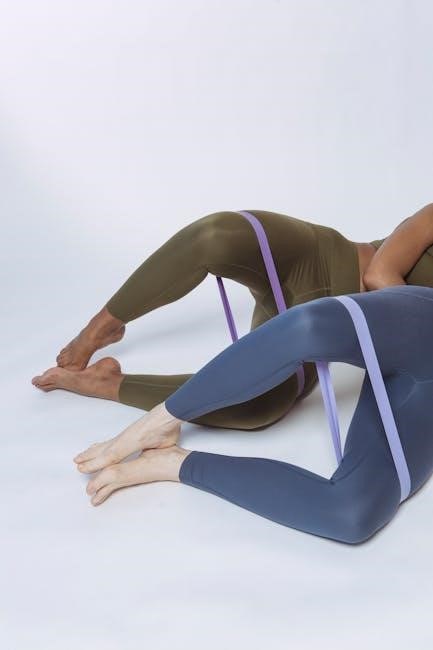
Monitoring Progress and Adjusting Exercises
Regular check-ups and self-monitoring techniques track progress in spinal alignment and muscle balance, allowing adjustments to exercises for optimal results and long-term spinal health.
Role of Regular Check-Ups
Regular check-ups are vital for monitoring progress in scoliosis rehabilitation. They allow healthcare providers to assess spinal alignment, muscle balance, and functional improvements. Through X-rays, clinical assessments, and patient feedback, adjustments to exercise plans can be made to optimize results. These visits ensure that the rehabilitation program remains effective and tailored to the individual’s needs, preventing curve progression and enhancing long-term spinal health.
Check-ups also provide an opportunity to address any challenges or discomfort, ensuring exercises are performed safely and correctly. This continuous oversight supports better outcomes and patient adherence to their program.
Self-Monitoring Techniques
Self-monitoring techniques empower patients to take an active role in their scoliosis rehabilitation. Daily tracking of posture, muscle tension, and exercise performance helps identify progress or potential issues. Patients can use apps, journals, or mirrors to assess spinal alignment and movement quality. Regular self-assessments ensure consistency in exercise routines and prompt adjustments as needed. This proactive approach fosters greater awareness of body mechanics and enhances overall engagement in the rehabilitation process.
Adjusting Exercises Based on Progress
Adjusting exercises based on progress ensures personalized treatment effectiveness. As patients improve, exercises can be modified to increase intensity or focus on new areas. Progress monitoring allows for tailored adjustments, integrating new techniques to maintain challenge and effectiveness. Regular reassessments ensure exercises remain aligned with treatment goals, promoting long-term spinal stability and overall well-being. This adaptive approach maximizes the benefits of rehabilitation, addressing specific needs at each stage of recovery.

Lifestyle Modifications to Support Scoliosis Rehabilitation
Lifestyle changes, such as posture correction, balanced nutrition, and regular, appropriate physical activity, enhance spinal health and support rehabilitation. Avoiding harmful movements and promoting overall well-being is crucial.
Postural Awareness and Correction
Postural awareness and correction are vital for managing scoliosis, focusing on maintaining proper spinal alignment. Techniques like the Schroth Method emphasize conscious correction of posture through specific exercises. Activities such as pelvic tilts, spine extensions, and breathing exercises help improve alignment and reduce curvature. Regular practice of these exercises strengthens core muscles and enhances body awareness, promoting better posture. Consistency in these practices, along with professional guidance, is essential to achieve long-term postural improvement and support overall spinal health.
Diet and Nutrition for Spinal Health
A balanced diet is crucial for spinal health, particularly for individuals with scoliosis. Key nutrients include calcium and vitamin D for bone strength, omega-3 fatty acids to reduce inflammation, and antioxidants to promote healing. A diet rich in fruits, vegetables, lean proteins, and whole grains supports muscle and bone health. Proper hydration is also essential for spinal discs and joints. Avoiding processed foods and maintaining a healthy weight can further support spinal stability and overall well-being during rehabilitation exercises.
Physical Activity Recommendations
Regular physical activity is vital for individuals with scoliosis to maintain spinal stability and overall health. Low-impact exercises like swimming, cycling, and yoga are recommended as they strengthen muscles without putting excessive strain on the spine. Activities that improve core strength, balance, and flexibility are particularly beneficial. Avoiding high-impact sports that may worsen the curvature is advised. Consistent moderate exercise can enhance posture, reduce discomfort, and support long-term spinal health, complementing rehabilitation efforts and promoting a more active lifestyle.
Avoiding Activities That Worsen Scoliosis
Avoiding Activities That Worsen Scoliosis
Individuals with scoliosis should avoid activities that may exacerbate spinal curvature or cause discomfort. High-impact sports, heavy lifting, and repetitive bending or twisting movements can strain the spine. Contact sports or activities that involve sudden jolts should be avoided to prevent progression. It’s crucial to steer clear of exercises that overstretch or imbalanced muscle development. Consulting a healthcare provider to tailor physical activities to individual needs is recommended to ensure safety and effectiveness in managing scoliosis.
Scoliosis rehabilitation exercises effectively improve spinal stability and reduce progression. Consistent adherence to personalized programs is crucial for optimal outcomes. Healthcare providers play a key role in tailoring exercises to individual needs.
Scoliosis rehabilitation exercises are evidence-based approaches that improve spinal stability, reduce curvature progression, and enhance quality of life. Personalized plans, including core strengthening, flexibility, and breathing techniques, are essential. The Schroth Method, PSSE, and SEAS are effective interventions. Home exercises, when consistently applied, promote long-term benefits. Regular monitoring and adjustments ensure optimal outcomes. These methods are supported by clinical studies and guidelines, emphasizing their role in managing scoliosis effectively across all age groups and severity levels.
Future Directions in Scoliosis Rehabilitation
Future advancements in scoliosis rehabilitation may focus on integrating technology, such as wearable devices and AI, to monitor progress and personalize exercises. Research into combining exercise therapies with bracing for enhanced results is ongoing. Telehealth platforms could expand access to specialized care. Additionally, studies on long-term outcomes of methods like Schroth and SEAS will refine treatment protocols. These innovations aim to improve efficacy, accessibility, and patient adherence, offering tailored solutions for diverse scoliosis cases and promoting better spinal health globally.
Encouraging Patient Adherence to Exercise Programs
Adherence to scoliosis exercise programs is crucial for optimal outcomes. Personalized plans, clear communication, and setting realistic goals can motivate patients. Education about the benefits of exercises, such as pain reduction and improved posture, enhances commitment. Regular follow-ups and positive feedback from therapists also boost adherence. Incorporating exercises into daily routines and providing emotional support are key strategies. Consistency is vital for long-term spinal health and achieving the full potential of rehabilitation efforts.